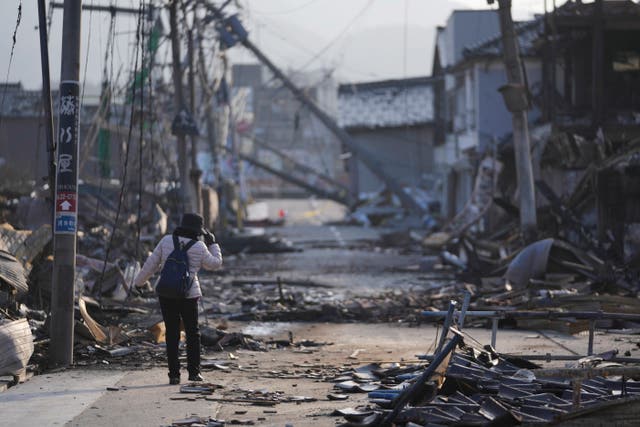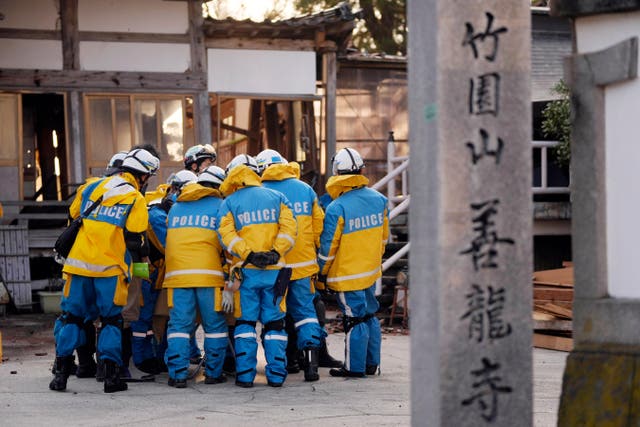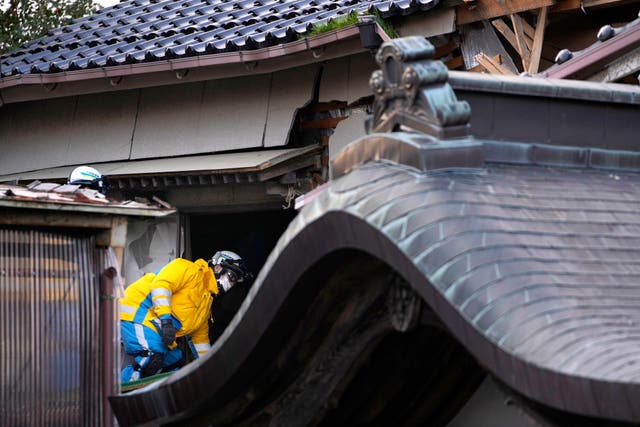Woman in her 90s rescued five days after deadly Japanese quake
The quake killed at least 126 people in western Japan.

A woman in her 90s has been pulled alive from a collapsed house in western Japan, 124 hours after a major quake slammed the region, killing at least 126 people.
The woman in Suzu city, Ishikawa Prefecture, had survived for more than five days after the 7.6 magnitude quake that hit the area on Monday.
Chances for survival typically diminish after the first 72 hours. Several other dramatic rescues have been reported over the past few days as soldiers, firefighters and others joined a widespread effort.

His condition suddenly worsened and he died on Friday, according to officials in Ishikawa prefecture, the hardest-hit region.
Aftershocks threatened to bury more homes and block roads crucial for relief shipments.
Officials warned that roads already cracked could collapse completely. That risk was growing with rain and snow expected overnight and on Sunday.

The tremors left roofs on roads and everything beneath them crushed flat. Roads were warped, while in Wajima, fire turned a whole neighbourhood into ashes.
More than 200 people were still unaccounted for, although the number has fluctuated. Eleven people were reported trapped under two homes that collapsed in Anamizu.
In an unusual gesture from nearby North Korea, leader Kim Jong Un sent a message of condolence to Japanese Prime Minister Fumio Kishida, the official Korean Central News Agency reported.

Japanese government spokesman Yoshimasa Hayashi told reporters that Japan was grateful for all the messages, including the one from North Korea. Mr Hayashi said the last time Japan received a condolence message from North Korea for a disaster was in 1995.
Along Japan’s coastline, power is gradually being restored, but water supplies are still short. Emergency water systems were also damaged.
Thousands of troops were flying and trucking in water, food and medicine to the more than 30,000 people who had evacuated to auditoriums, schools and other facilities.





